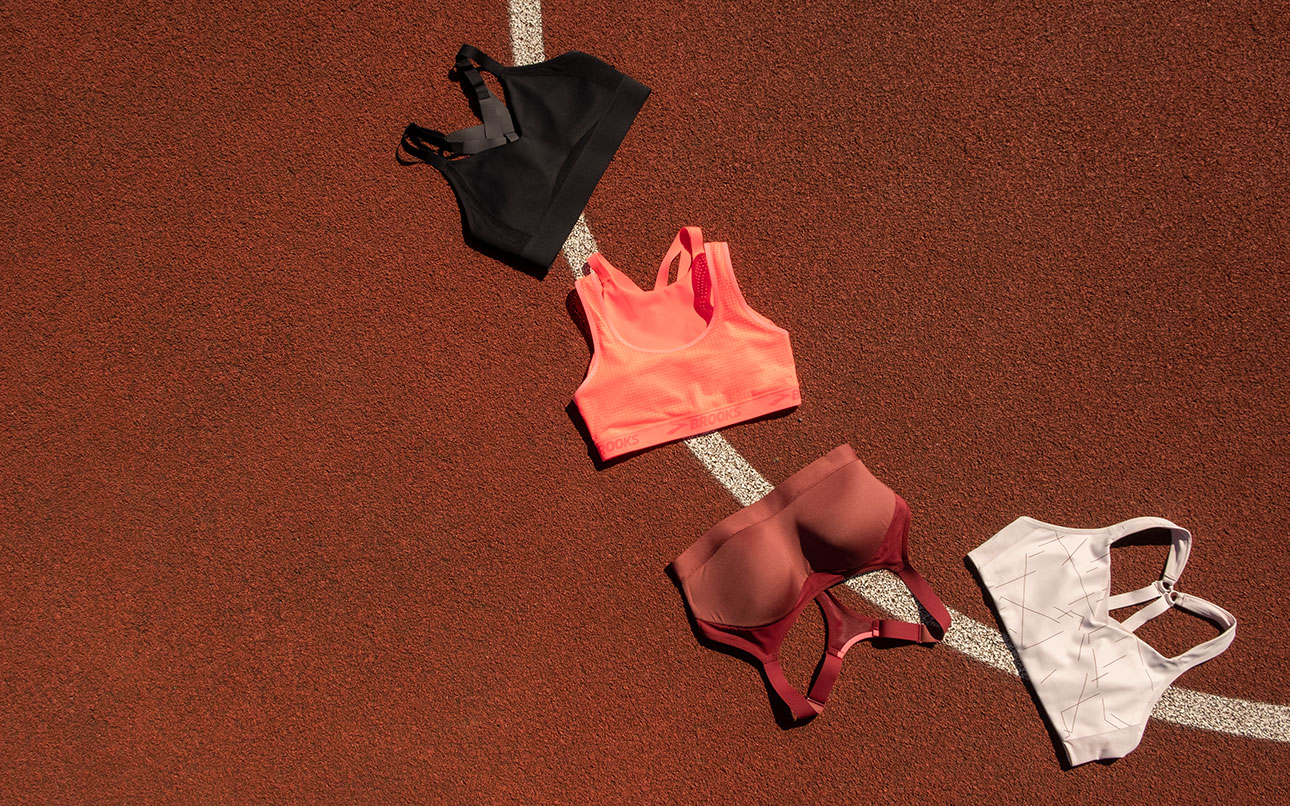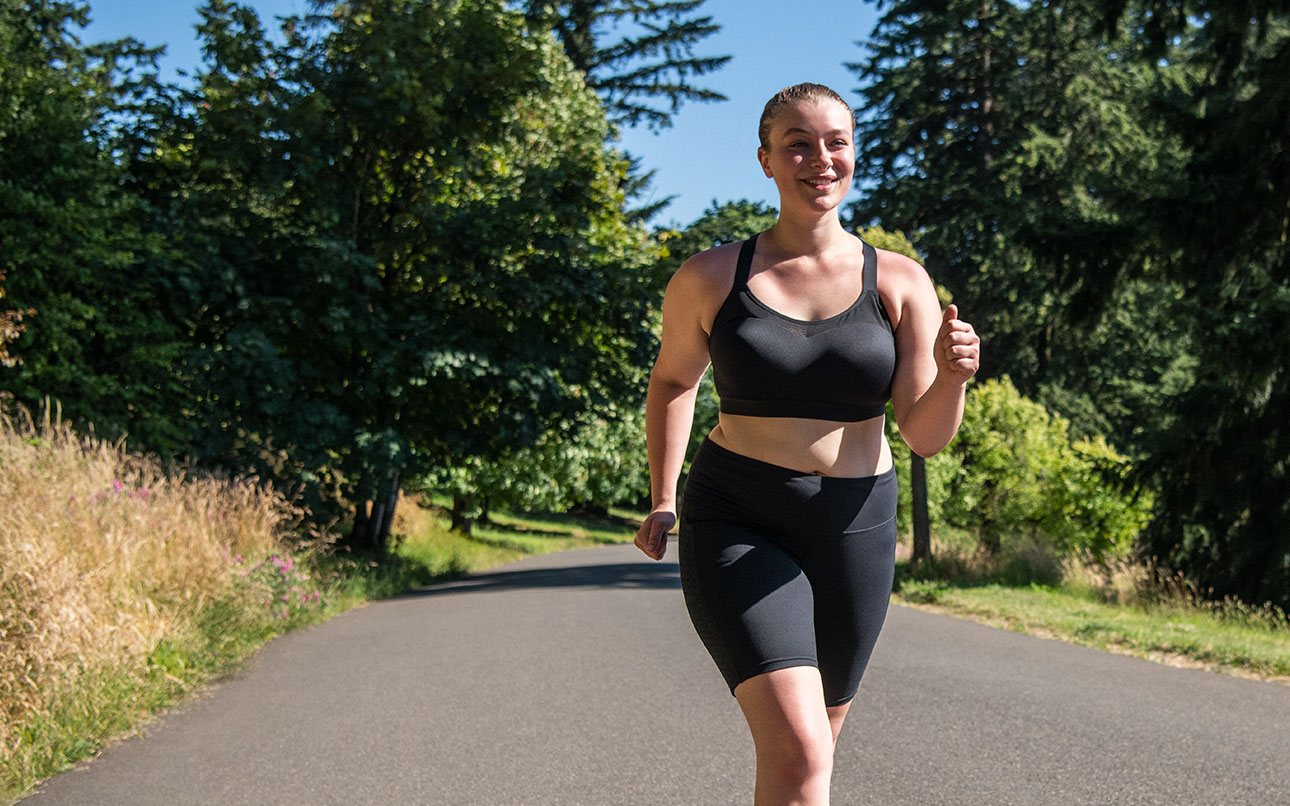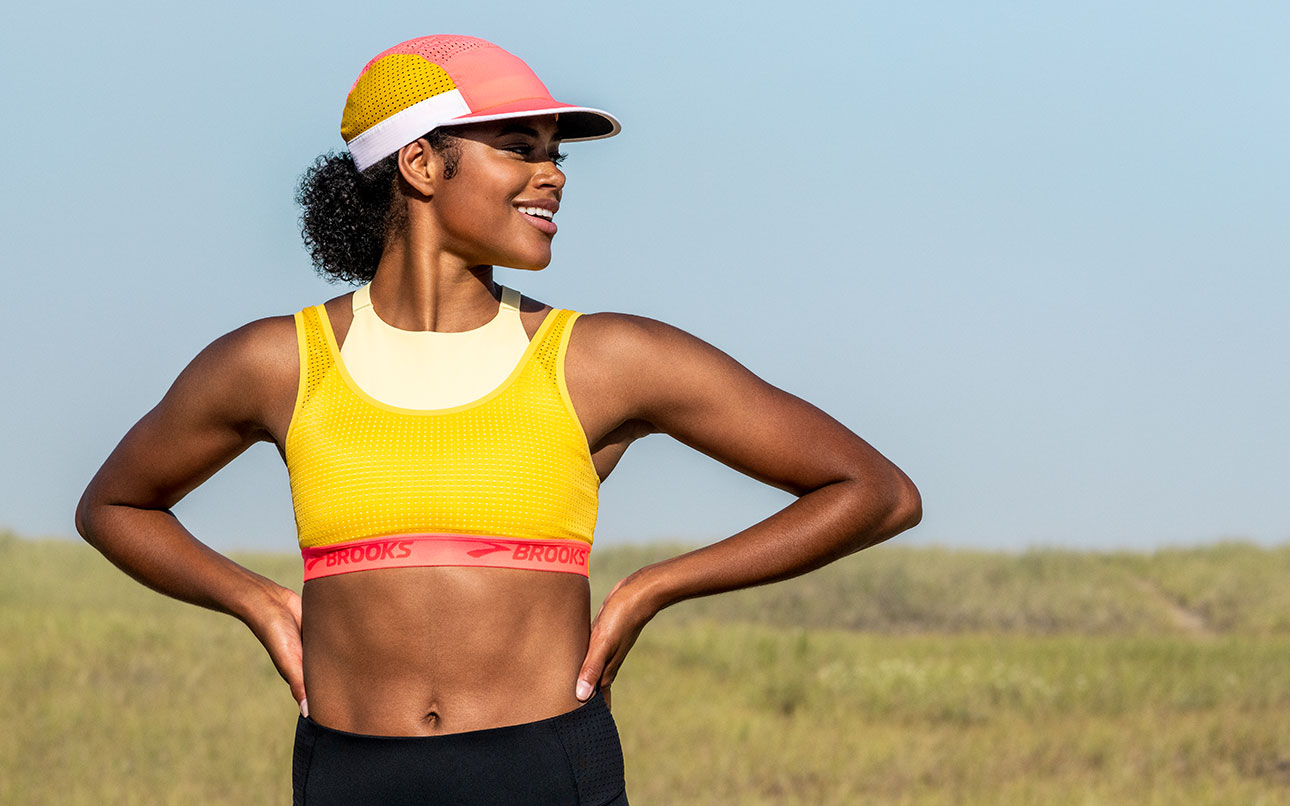Wondering how to sort through all advice on running bras out there? We’re here to help. Our bra designers and developers teamed up with biomechanical researchers to find out the truth behind five common myths.
Myth 1: There’s only one correct support level for running
Our biomechanical experts at University of Portsmouth found that most women preferred a similar range of support for running, but that there’s no single best level of support. That’s why we no longer categorize by level of impact/support. Our run bras are all built within the range that women told us felt most comfortable.

Myth 2: You have to wear your measured bra size
Although measurements provide a great starting point and are often accurate, that’s not always the case person-by-person. You should first measure, then try and make sure that the fit feels right for your body.
Myth 3: Wearing an unsupportive bra isn’t that bad
Working with our partners in Portsmouth, we learned that when women wear a bra without enough support, women can lose up to 4cm of stride length due to poorly controlled breast movement — that’s an entire extra mile over the length of a marathon! No thanks!
Myth 4: Wearing two sports bras offers double the support
We’ve all seen women do this, but we wish they knew they didn’t need to! Wearing a bra that’s designed for running and fits correctly is the best way to get the right support.

Myth 5: Bras with built-in cups are more supportive than bras without them
It’s true that built-in cups offer one kind of support — their structure can help prevent bouncing — but depending on your body type and what you find comfortable, you may prefer bras that use compressive fabric instead of built in cups. There’s no wrong answer here! Find what you like and go with that.
Putting our bras to the test
We design our run bra collections to meet a wide range of sizes, features, and fit preferences. Shop all our run bras.



